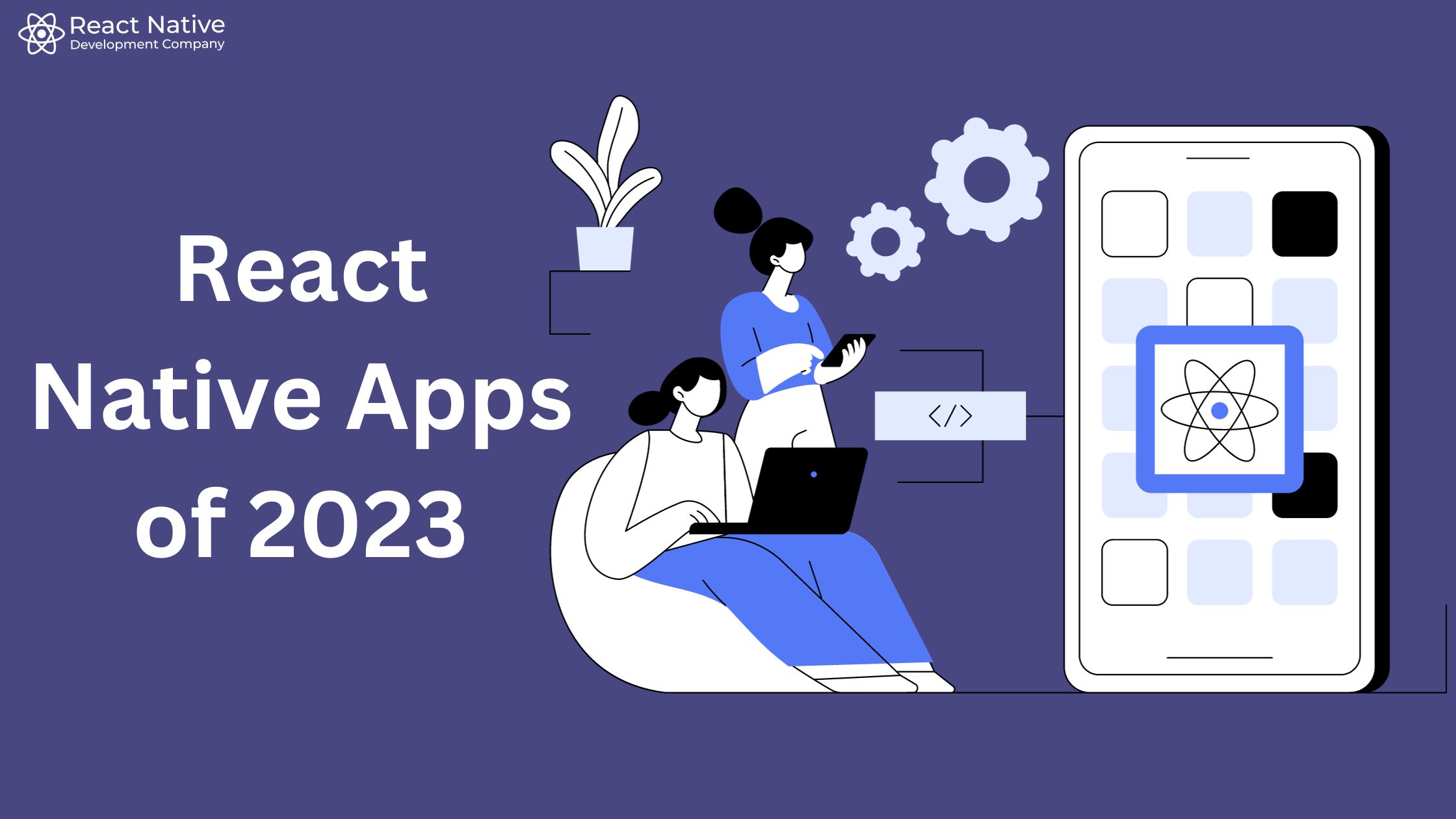
Explore the Top 10 React Native Apps of 2023: Build & Deploy
In the fast-paced world of mobile app development, React Native has established itself as a leading framework for building cross-platform applications. Whether you are a seasoned developer or just starting, understanding what React Native is its significance, and its potential can make a significant difference in your journey. In this blog post, we will delve into the world of React Native, explore some of the top React Native apps of 2023, and understand why this framework continues to be a popular choice among developers.
What is React Native?
React Native, an open-source framework created by Facebook, enables the development of mobile applications using JavaScript and React. It allows developers to create high-quality, native mobile apps for both iOS and Android platforms with a single codebase. React Native harnesses the capabilities of React, a widely used JavaScript library for creating user interfaces, and expands its reach into the realm of mobile app development.
One of the key advantages of React Native is its ability to provide a consistent user experience across different platforms while also allowing developers to access native features and functionalities. This approach significantly reduces development time and effort, making it a cost-effective solution for businesses and developers alike.
React Native Projects and Their Significance
React Native has gained immense popularity in recent years, resulting in the creation of numerous projects and applications. These projects span various industries and have demonstrated the versatility and capabilities of the framework. Let’s take a closer look at some of the noteworthy React Native apps built with this powerful framework in 2023.
Top 10 React Native Apps of 2023
- Facebook
It’s only fitting to start with the platform that gave birth to React Native. Facebook’s mobile app is a prime example of what can be achieved with this framework. The app is known for its smooth performance, fast loading times, and native-like user experience on both iOS and Android devices. - Instagram
Instagram, a subsidiary of Facebook, also uses React Native to power its mobile app. The app’s seamless navigation, real-time updates, and engaging user interface are a testament to the framework’s capabilities. - Airbnb
Airbnb, the popular online marketplace for lodging and travel experiences, relies on React Native for its mobile app. This choice has enabled them to maintain a consistent user experience and deliver updates simultaneously to both iOS and Android users. - Uber Eats
Uber Eats, the food delivery platform, uses React Native to provide a responsive and user-friendly experience to customers. React Native’s ability to handle complex user interfaces and real-time updates has been instrumental in making this app a success. - Walmart
Walmart, one of the world’s largest retail chains, has adopted React Native to enhance its shopping app. This choice has enabled Walmart to offer a feature-rich shopping experience to its customers, including access to in-store maps and real-time inventory. - Tesla
Tesla’s mobile app, which allows owners to control their electric vehicles remotely, also relies on React Native. The app’s ability to provide real-time updates on vehicle status, location, and charging is a testament to React Native’s capabilities. - SoundCloud
SoundCloud, a popular music streaming platform, uses React Native to deliver a consistent and engaging user experience on mobile devices. The app’s smooth navigation and real-time streaming capabilities have made it a favorite among music enthusiasts. - Skype
Microsoft’s Skype app utilizes React Native to provide a seamless video calling and messaging experience. The app’s cross-platform compatibility ensures that users can connect with friends and colleagues regardless of their device. - Bloomberg
Bloomberg, a global financial news and data provider, has embraced React Native for its mobile app. This choice has allowed Bloomberg to deliver up-to-the-minute financial information to users on both iOS and Android platforms. - Pinterest
Pinterest, the visual discovery and bookmarking platform, uses React Native to offer a rich and interactive mobile experience. The app’s responsive design and real-time updates make it a go-to platform for users looking for inspiration.
Why React Native Continues to Thrive
React Native’s continued success and widespread adoption can be attributed to several key factors:
1. Cross-Platform Compatibility
React Native enables developers to write code once and use it on both iOS and Android platforms. This significantly reduces development time and costs, as developers can work on a single codebase instead of maintaining separate codebases for each platform.
2. Native-Like Performance
React Native applications deliver native-like performance, thanks to the framework’s ability to use native components. This means that users experience smooth animations, fast loading times, and responsive interfaces, just as they would with native apps.
3. Hot Reloading
One notable attribute of React Native is its impressive hot reloading functionality. Developers can make changes to the code and see the results in real time without restarting the entire app. This functionality expedites the development workflow and boosts efficiency.
4. Strong Community Support
React Native has a thriving community of developers, which means that there is a wealth of resources, libraries, and third-party plugins available to streamline development. This support network makes it easier for developers to find solutions to common challenges.
5. Updates and Maintenance
React Native simplifies the process of updating and maintaining mobile apps. Developers can push updates directly to users without waiting for approval from app stores, ensuring that users always have access to the latest features and improvements.
Building Your Own React Native App
If you’re inspired by the success stories of these top React Native apps and want to embark on your own project, here are some steps to get you started:
1. Learn React and JavaScript
Before diving into React Native, it’s essential to have a strong grasp of React and JavaScript. These are the foundational technologies that React Native is built upon. You can find plenty of online resources, courses, and tutorials to help you get started.
2. Install React Native
You’ll need to set up your development environment by installing React Native. The official React Native documentation provides detailed instructions for this process, tailored to your operating system.
3. Choose a Text Editor or IDE
Select a text editor or integrated development environment (IDE) that you are comfortable with. Popular choices include Visual Studio Code, Atom, and WebStorm. Configure your editor with extensions or plugins that enhance React Native development.
4. Start a New Project
Create a new React Native project using the react-native init command. This will set up a basic project structure for you to build upon.
5. Develop Your App
Begin writing code for your app, following best practices and design guidelines. React Native provides a wide range of components and libraries to help you create a feature-rich app.
6. Test Your App
Regularly test your app on both iOS and Android emulators or physical devices to ensure that it functions correctly on all platforms.
7. Optimize Performance
Optimize your app’s performance by using native components, minimizing rendering bottlenecks, and leveraging third-party libraries when necessary.
8. Deploy Your App
Once your app is ready, you can deploy it to the App Store (for iOS) and Google Play (for Android). Follow the respective guidelines for app submission, and be prepared to provide the necessary assets and information.
9. Gather Feedback and Iterate
After launching your app, gather user feedback and analytics data to identify areas for improvement. Use this feedback to iterate on your app and release updates regularly.
Conclusion
In 2023, React Native will remain a dominant force in the world of mobile app development. Its ability to deliver cross-platform compatibility, native-like performance, and a responsive user experience has made it the framework of choice for many industry giants and startups alike. By exploring the top React Native apps of the year and understanding why React Native thrives, you can embark on your own journey to build and deploy successful mobile applications. So, whether you’re a seasoned developer or a newcomer, consider React Native a powerful tool in your app development arsenal.
